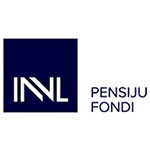Risk level between investment plans
The contributions to the 2nd pension pillar to be reasonably safe and would make a long-term profit that would provide you with a higher pension, Valsts fondeto pensiju likums stipulate:
- where fund shall be invested;
- investment restrictions;
- where it is prohibited to invest.
Funds shall be invested mainly in the stock exchange-traded securities and bank deposits, thus excluding the doubtful, secret or to politicized transactions, because the securities prices in the stock exchange and bank interest rates are disclosed and everyone can check how profitable is his pension capital investment.
Pension capital may be invested in government securities, corporate debt securities (bonds), companies shares, bank deposits, as well as investment funds and risk capital markets. Corporate debt securities and shares have to be on the Official List of a stock exchange, where only the securities of the country`s biggest and best companies are registered and marketed that meet certain quality requirements.
Not more than 75% of the total funds may be invested in shares. Not more than 20% of the investment may be invested in foreign currencies. These limits are designed taking care of the security of investments.
Only a limited part of funds may be invested in securities of one company (10%) per investment fund (5%) or deposit in one bank (10%), risk capital market (10%). It is meant to contribute to the investment risk allocation between the different companies and securities.
Pension capital fund management is transferred to professional managers – specifically licensed investment companies.
Although there are many different investment plans with different degree of risk, basically they can be divided into 3 types:
Conservatives – the money is invested in stable, safe securities, which are usually government treasury bills and bonds or companies` promissory notes or bonds. These investment plans are with a small profitability, but are not as volatile as investments in shares.
Balanced – the money is invested in financial capital markets so that gaining of profit and the associated uncertainty (risk) would be balanced with the preservation of pension funds and security of investments. Balanced plans may invest up to 25% in companies` shares, thereby increasing the expected long-term returns of the investment plan.
Active – the money is invested in shares of various companies, because shares have traditionally the highest returns in the long-term. Active investment plans, which started operations by 2017, do not exceed 50% of investments in shares, while active investment plans starting in 2018 increased the limit on investments in shares up to 75%. However, it is good to remember that investments in shares are also associated with higher risk, it means fluctuations.
It is important to remember the connection: the higher the expected profit is, the greater is the uncertainty about what profit you will receive in the future.










